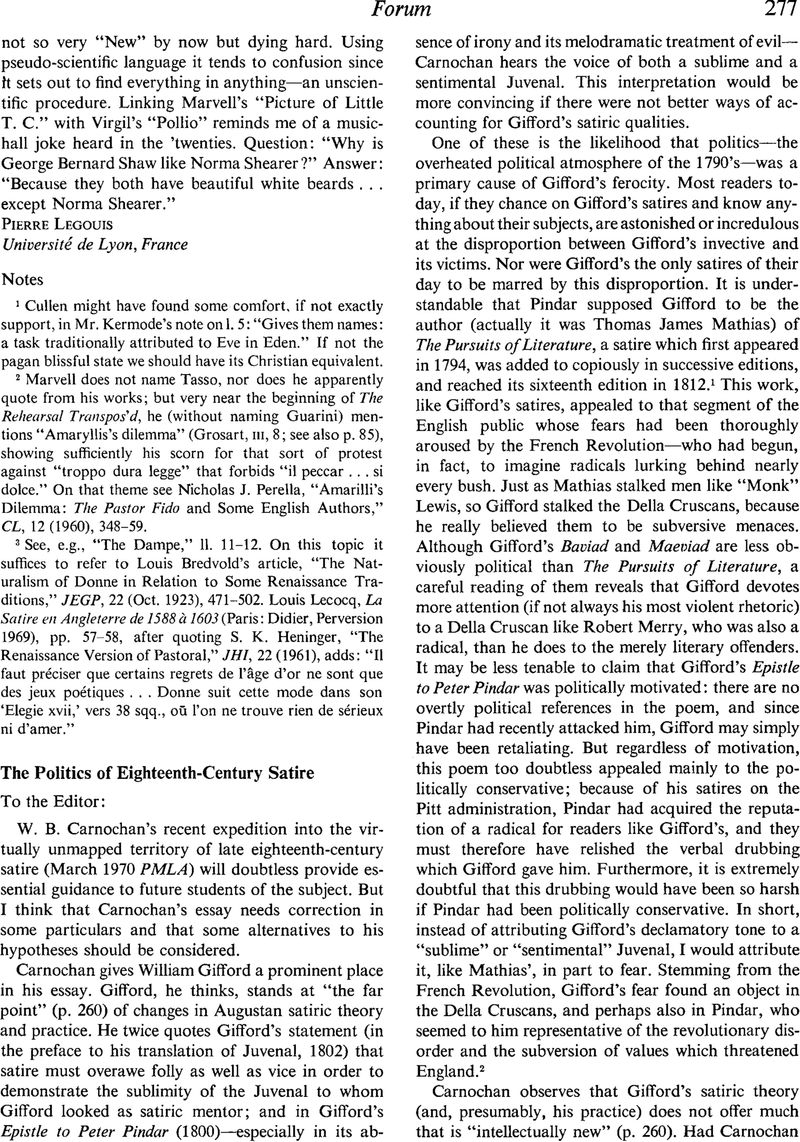No CrossRef data available.
Published online by Cambridge University Press: 01 December 2020

Note 1 in page 279 Kenneth Hopkins, Portraits in Satire (London: Barrie, 1958), p. 194.
Note 2 in page 279 W. N. Hargreaves-Mawdsley, The English Delia Cms-cans and Their Time, 1783–1828, International Archives of the History of Ideas, 22 (The Hague: Martinus Nijhoff, 1967), [243]-244, also regards Gifford's motives in attacking the Delia Cruscans as primarily political. Gifford's disclaimer of these motives—“Introduction” (1800) to The Baviad, and Maeviad, 8th ed. (London: Murray, 1811), p. xvi—is unconvincing.
Note 3 in page 279 “An Essay on the Roman Satirists, by William Gifford, Esq.,” in The Satires of Juvenal, Persius, Sulpicia, and Lucilius, trans. Lewis Evans (London: Bell, 1852), p. xxi; The Baviad, and Maeviad, p. 45.
Note 4 in page 279 “Epistle to Peter Pindar,” in The Baviad, and Maeviad, p. 189.
Note 5 in page 279 “On Good and Ill-Nature. To Mr. Pope,” in Trifles (London, 1745), pp. 181–82; Two Epistles to Mr. Pope, Concerning the Authors of the Age (London: Gilliver, 1730), pp. 12–13.
Note 6 in page 279 An Essay on Satire, Particularly on the Dunciad(London : Gilliver, 1730), introd. Thomas B. Gilmore, ARS No. 132 (1968), p. 5.
Note 7 in page 279 The Poems of Alexander Pope: A One- Volume Edition of the Twickenham Text with Selected Annotations, ed. John Butt (New Haven, Conn.: Yale Univ. Press, 1963), pp. 701–02, 11. 208–11.
Note 8 in page 279 The Power of Satire: Magic, Ritual, Art (Princeton, N. J.: Princeton Univ. Press, 1960), pp. 107, 268.
Note 9 in page 279 Carnochan cites Harte (p. 261) in tracing the development of a sublime Juvenal, but not in his section on the convergence of satire and sentimentality.